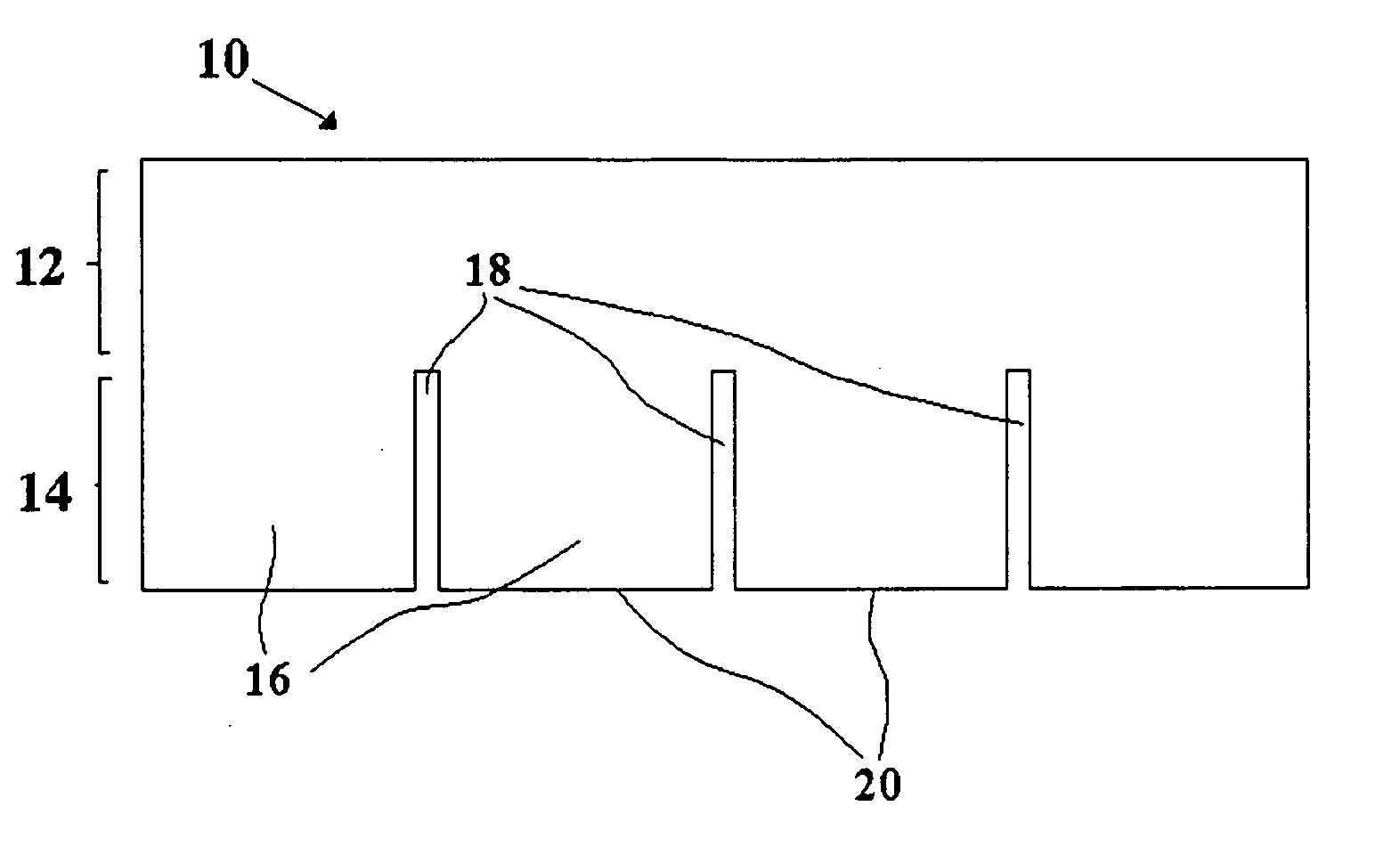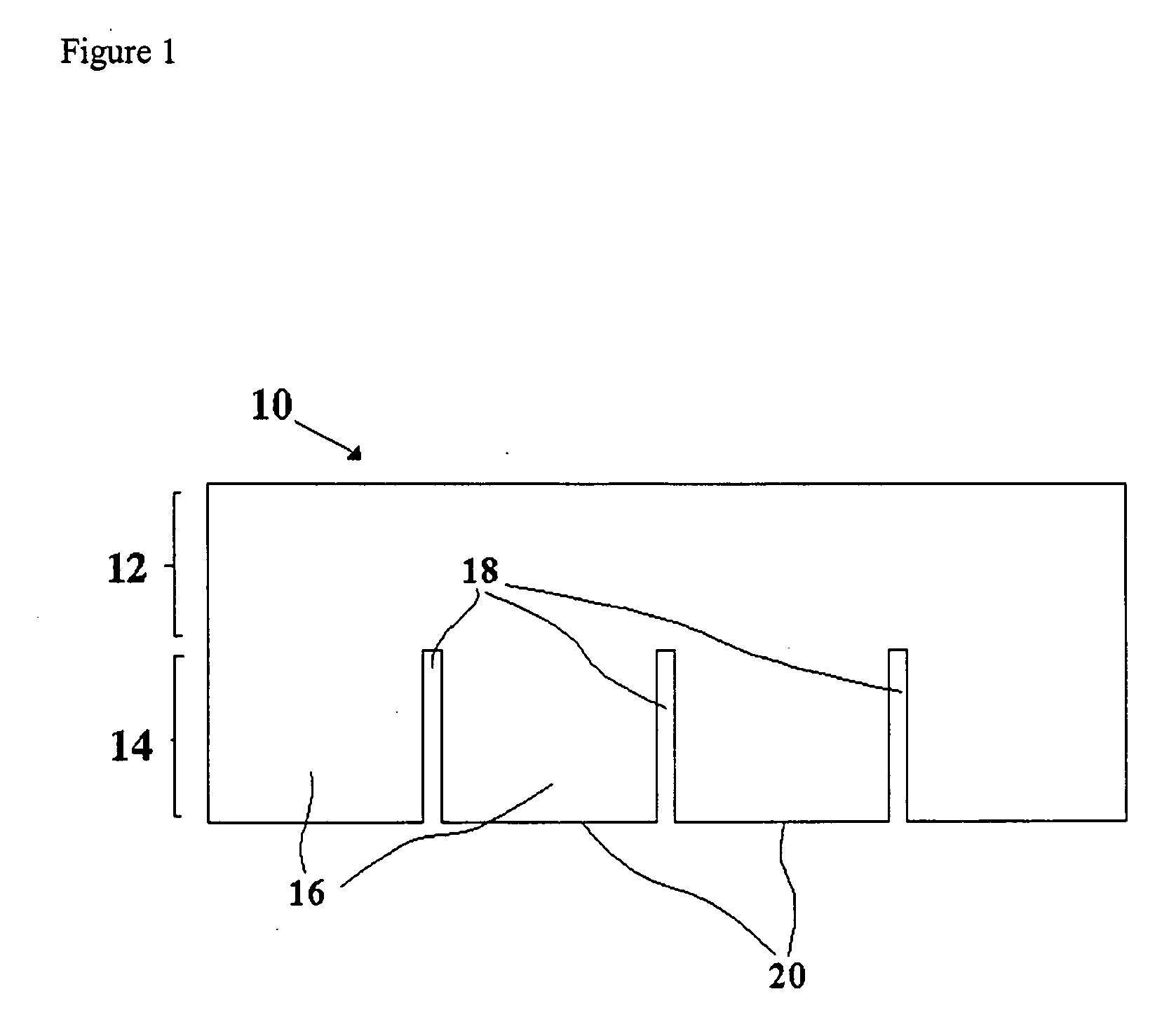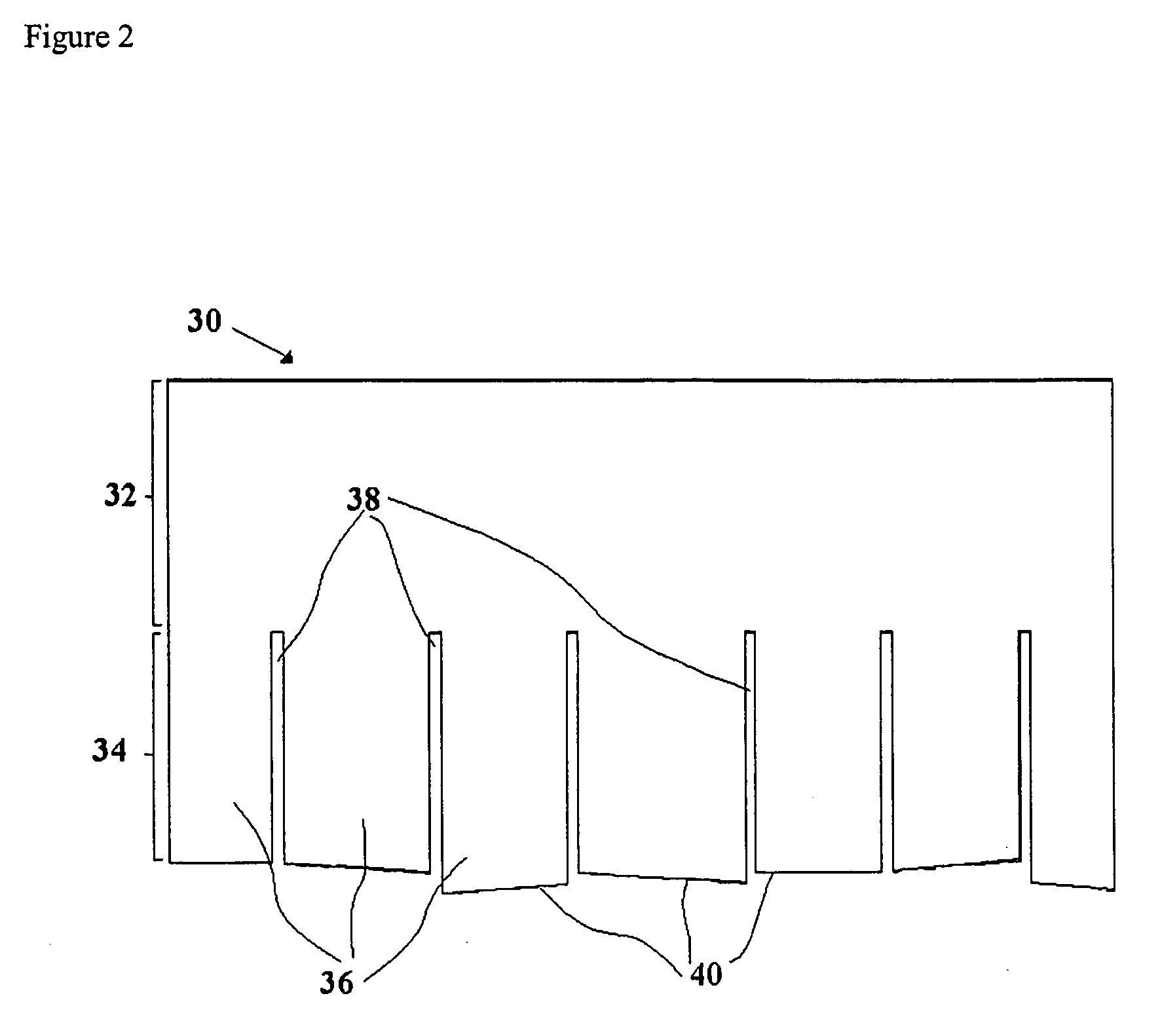Composite roofing panel
a composite roofing and composite technology, applied in the field of composite roofing panels, can solve the problems of short life, weighing against the high source, production and installation cost of these materials, and reducing their usefulness and other attractive aspects, so as to achieve the effect of better imitating natural products
- Summary
- Abstract
- Description
- Claims
- Application Information
AI Technical Summary
Benefits of technology
Problems solved by technology
Method used
Image
Examples
example 1
[0048] The present example provides a panel having Class A fire resistance according to UL standards. A construction panel consisting of: (a) 57% rice hulls 16 / 80 mesh; (b) 0.4% UV stabilizer available from Ciba Geigy as 783 FDL (a hindered amine); (c) 0.2% Heat stabilizer available from Ciba Geigy as B225; (d) 1% available from Bayer as bayferrox 645 T brown pigment; (e) 15% Aluminum hydroxide; (f) 2% maleic acid grafted polyethylene (MAPE)—available from Dupont as MB226; (g) 18.7 % recycled milk jug flakes (having a melt flow index of about 0.6); (h) 4.7% HDPE (having a melt flow index of about 35); and(i) 1% zinc borate available from U.S. Borax as firebrake ZB,was mixed together to form a homogenous composition. This composition was then placed into a mold and compression molded into a construction panel 43 inches wide, 21.5 inches tall and 0.75 inches thick at its butt end. The panel was comprised of 7 shakes (fingers) resembling hand-split cedar shakes with widths between 4 an...
example 2
[0049] This example provides a panel having Class C fire resistance according to UL standards. A construction panel consisting of: (a) 50% rice hulls 16 / 80 mesh; (b) 0.4% UV stabilizer available from Ciba Geigy as 783 FDL (hindered amine); (c) 0.2% Heat stabilizer available from Ciba Geigy as B225; (d) 1% available from Bayer as bayferrox 645 T brown pigment; (e) 2% maleic acid grafted polyethylene (MAPE) available from Dupont as MB226; (f) 36.3 % recycled milk jug flakes (having a melt flow index of about 0.6); (g) 9.1% HDPE (having a melt flow index of about 35); and (h) 1% zinc borate available from U.S. Borax as firebrake ZB, was mixed together to form a homogenous composition. This composition was then placed into a mold and compression molded into a construction panel 43 inches wide, 21.5 inches tall and 0.75 inches thick at its butt end. The panel was comprised of 7 shakes (fingers) resembling hand-split cedar shakes with widths between 4 and 8 inches. The construction panel ...
PUM
 Login to View More
Login to View More Abstract
Description
Claims
Application Information
 Login to View More
Login to View More - R&D
- Intellectual Property
- Life Sciences
- Materials
- Tech Scout
- Unparalleled Data Quality
- Higher Quality Content
- 60% Fewer Hallucinations
Browse by: Latest US Patents, China's latest patents, Technical Efficacy Thesaurus, Application Domain, Technology Topic, Popular Technical Reports.
© 2025 PatSnap. All rights reserved.Legal|Privacy policy|Modern Slavery Act Transparency Statement|Sitemap|About US| Contact US: help@patsnap.com



